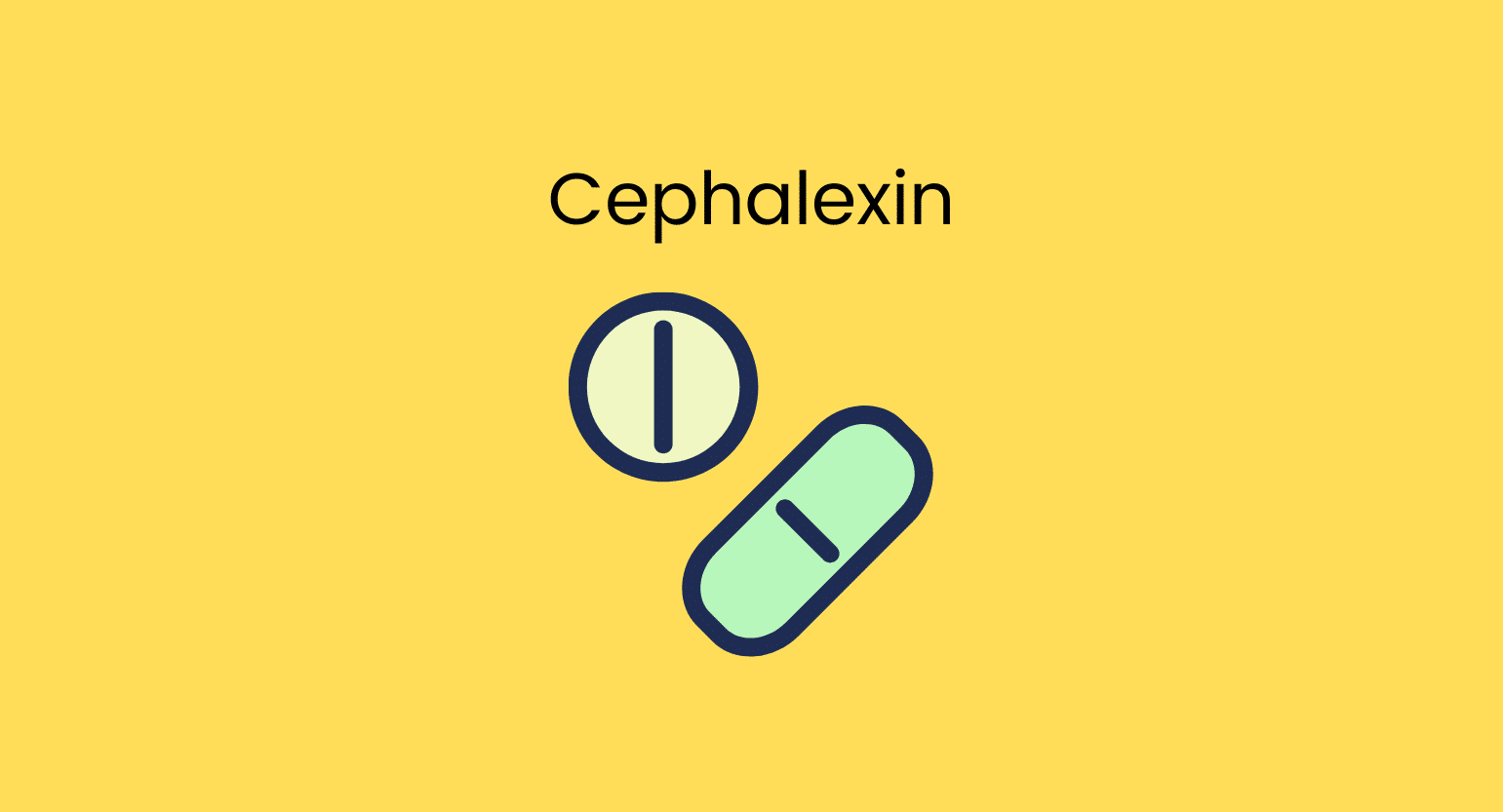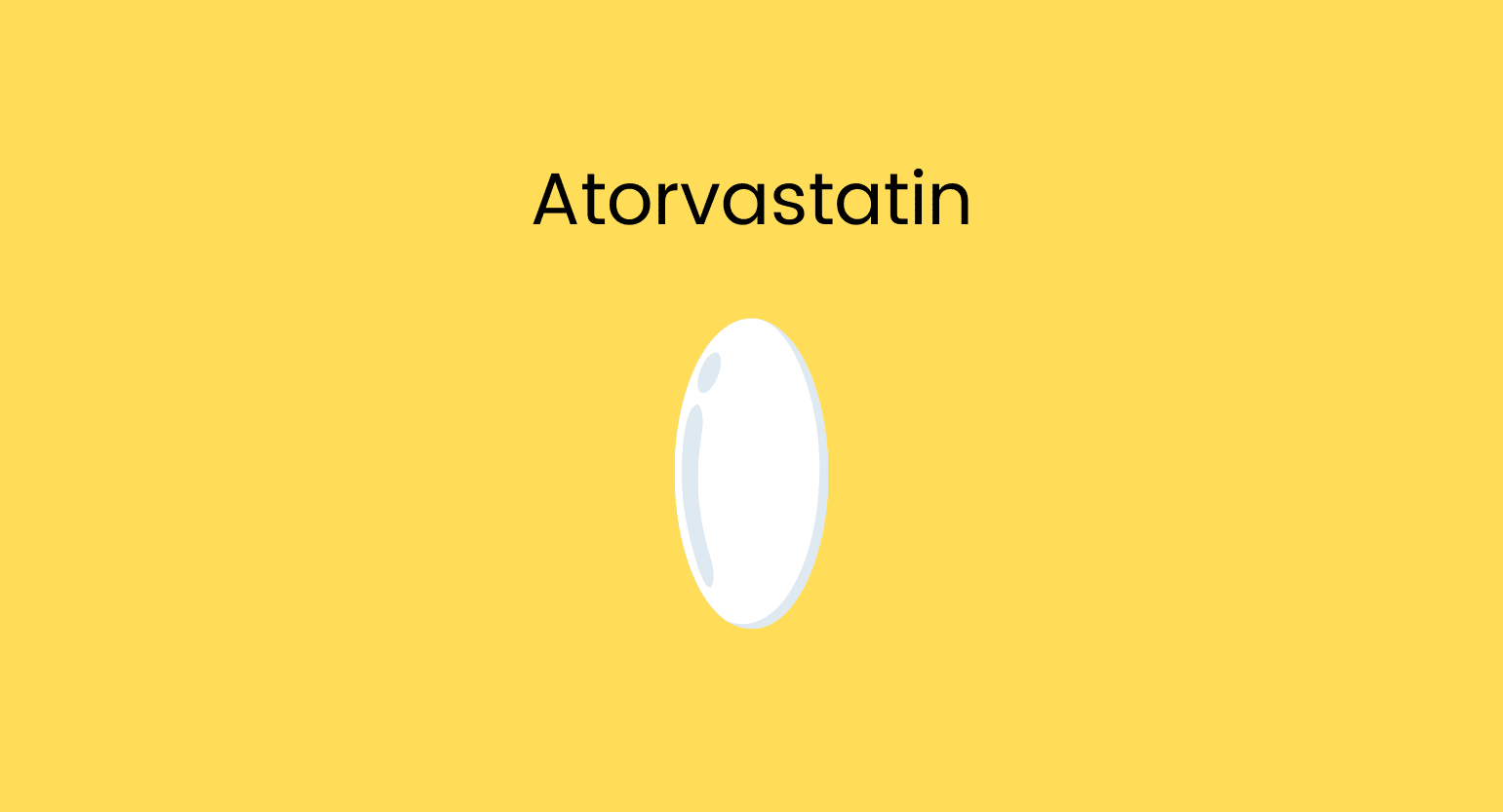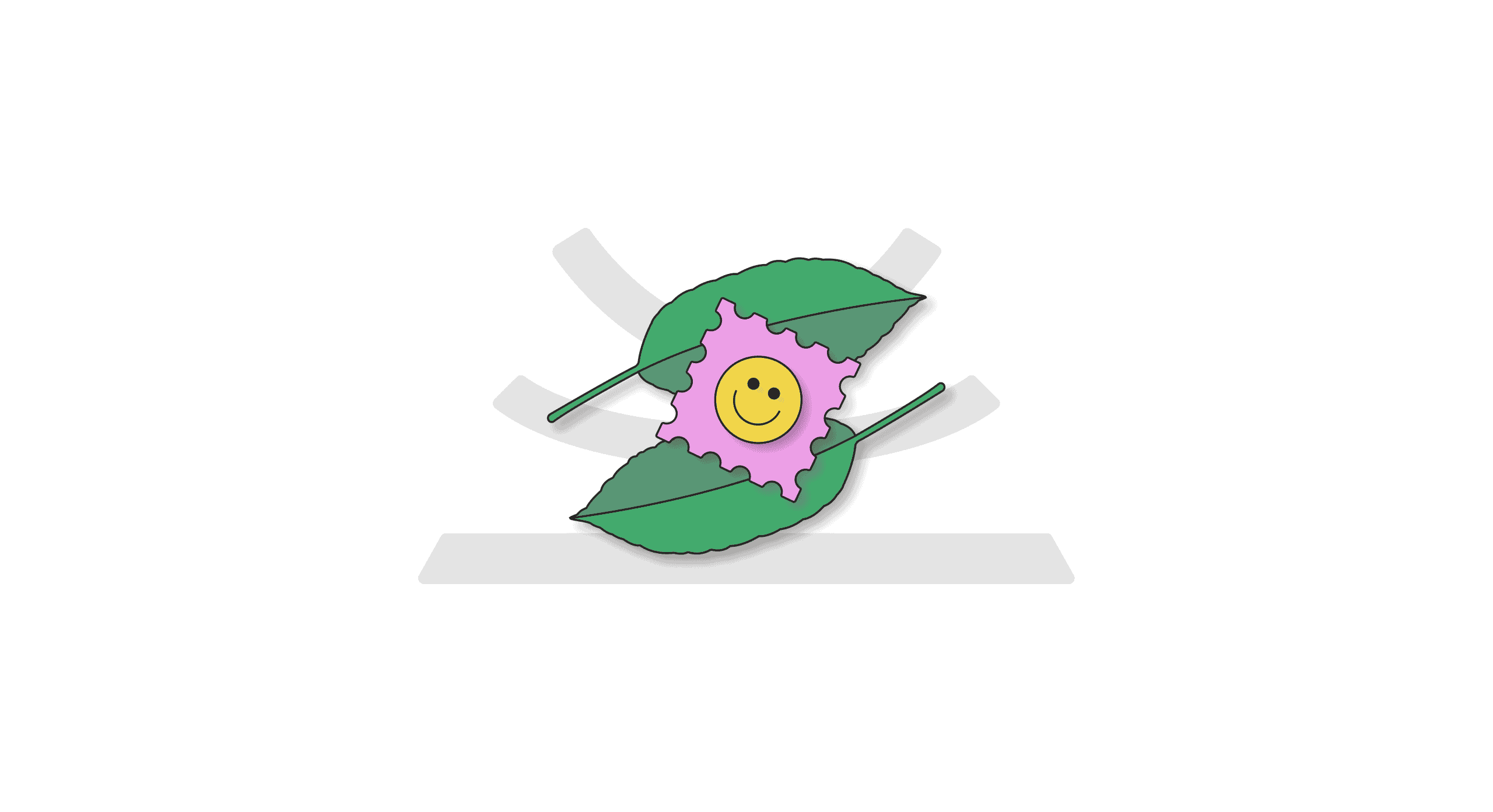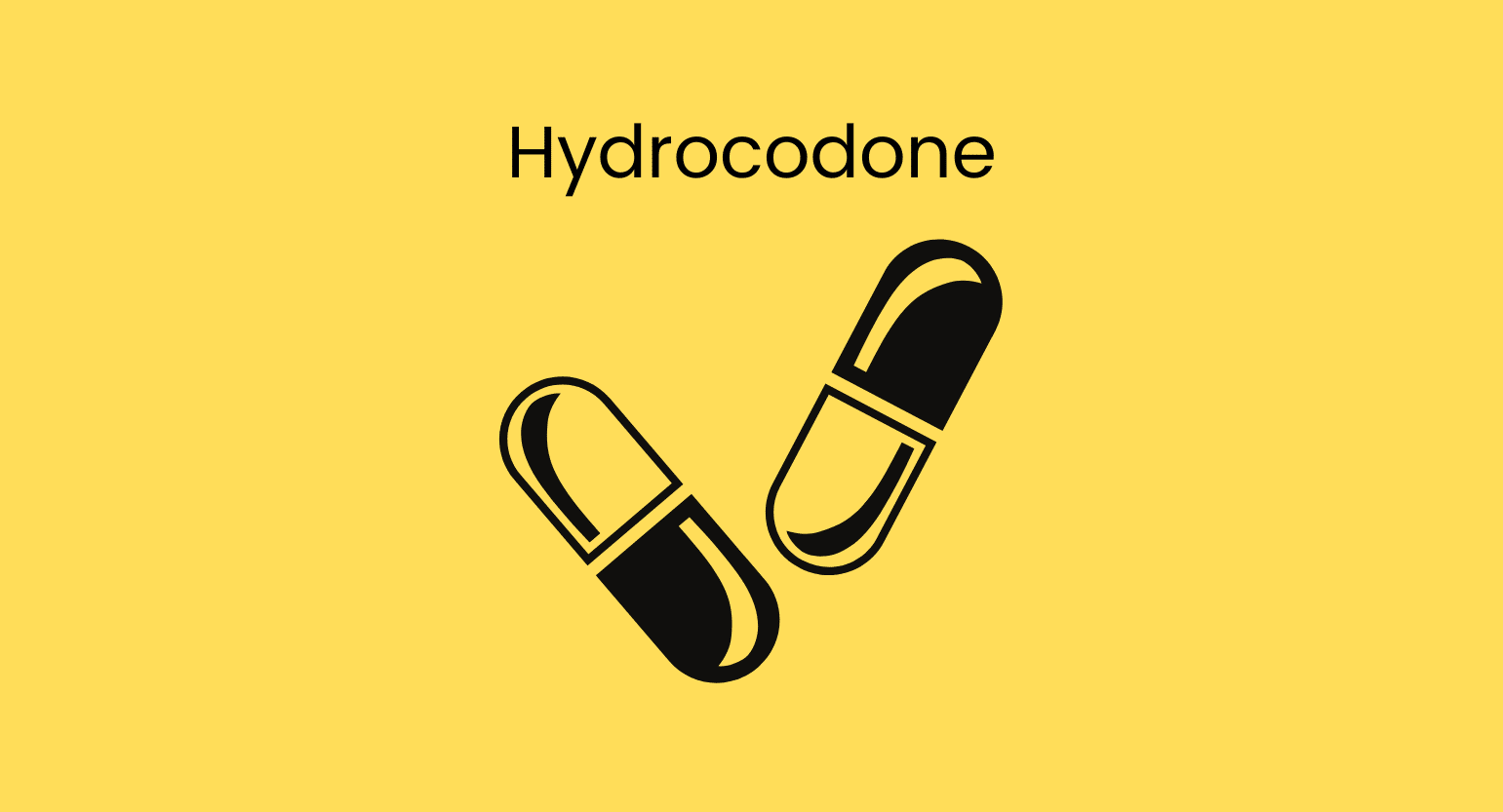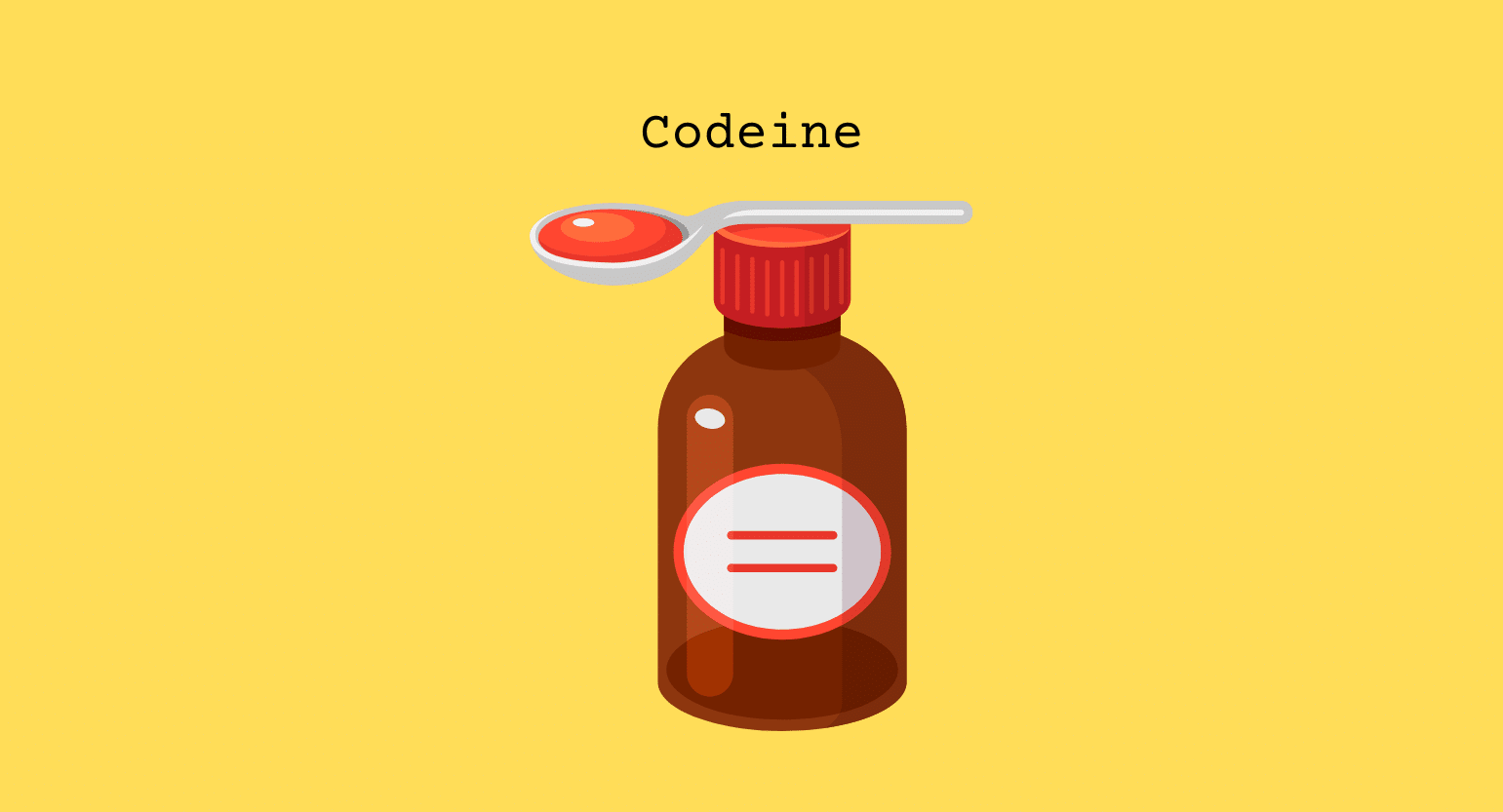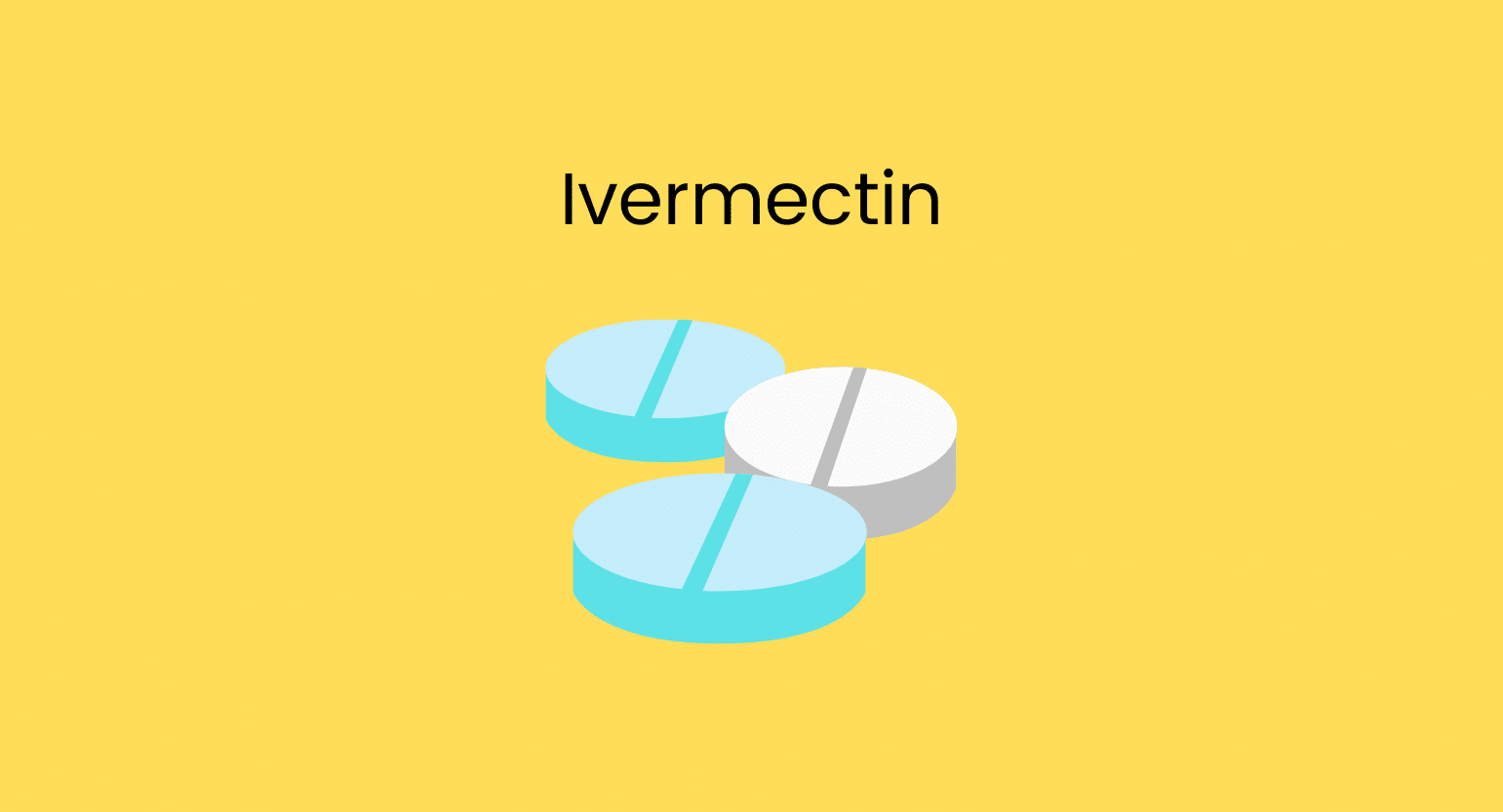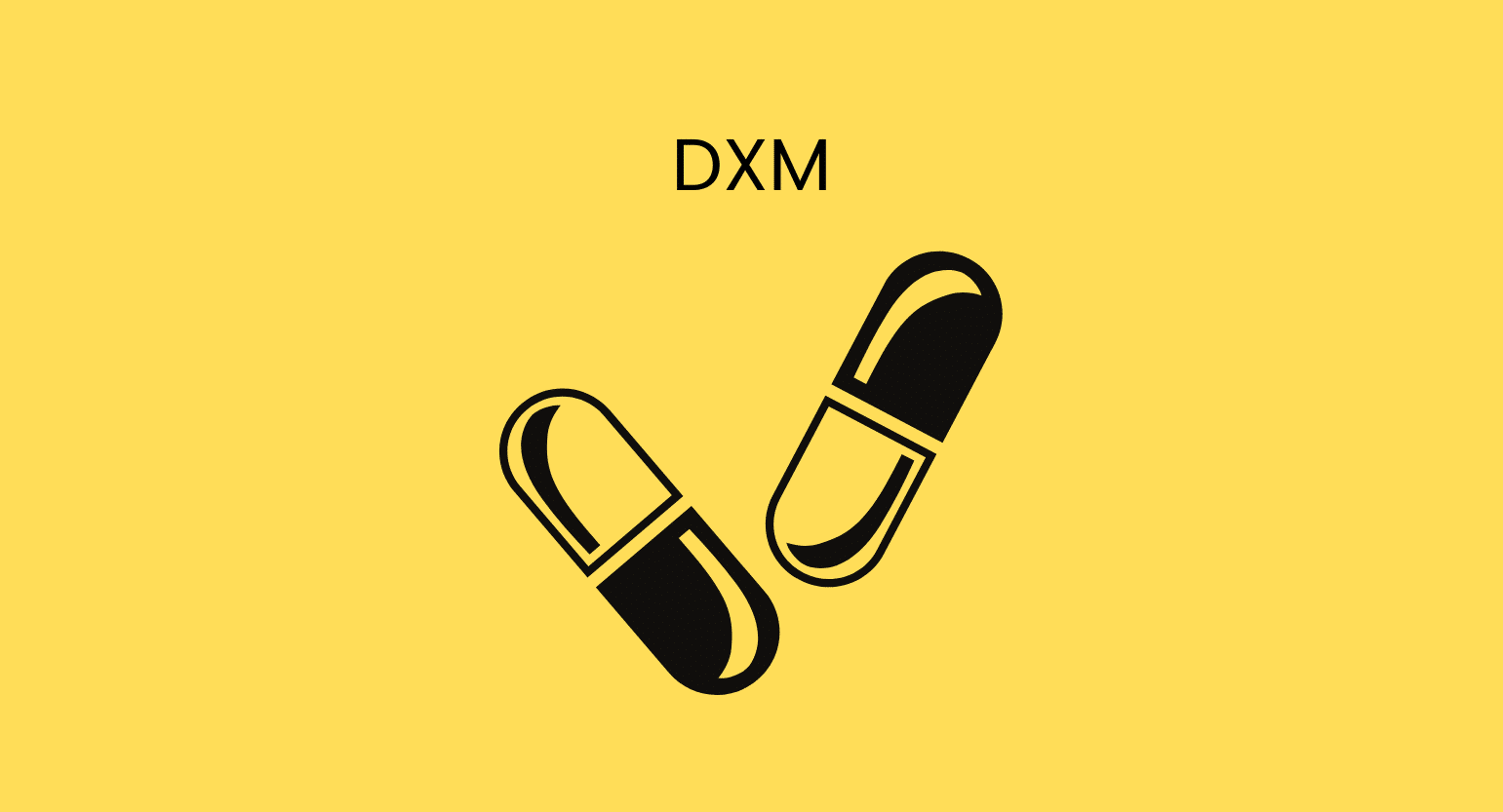Does Kratom Interact With Cephalexin?
Yes, kratom may reduce the efficacy of cephalexin (and vice-versa).
These two compounds are used for quite different applications —kratom acts on opioid receptors to block pain, increase mood, and alleviate anxiety [1], whereas cephalexin is an antibiotic that prevents cell wall formation in bacteria [2].
The metabolism pathways of these two drugs are different as well. Kratom is metabolized in the liver by CYP enzymes CYP3A4, CYP3A5, and CYP2D6 [3]. On the other hand, cephalexin does not undergo metabolism by CYP enzymes and is excreted unchanged in the urine [4].
Kratom is generally taken in the form of tea or powder. The drug releases the active alkaloids (e.g., mitragynine) in the stomach’s acidic environment [5]. The nitrogen atoms in kratom alkaloids are positively charged [6].
Cephalexin is also taken orally. Cephalexin and kratom are mainly absorbed in the small intestine [7,8]. The pH of the small intestine ranges from 6 to 7.4. At this pH, cephalexin molecules are negatively charged [9].
Since the kratom alkaloids and cephalexin molecules exhibit opposite charges, there will be an electrostatic attraction between these two drug particles. This will result in the binding of the two drugs, and the absorption of the individual drugs may be delayed, leading to decreased effects of both drugs.
Also, there is another mechanism by which kratom’s efficacy may be compromised. Cephalexin is a rapidly absorbable, acid-stable drug [10]. But, kratom is a rapidly absorbable, acid-labile drug [11,12]. If taken together, kratom and cephalexin will compete for the absorption surface.
Due to this competition, kratom alkaloids (e.g., mitragynine) may need to stay relatively long in the stomach’s acidic environment, losing various properties and compromising the herb’s effect.
Kratom & Antibiotic Medications
Cephalexin belongs to the cephalosporin group of antibiotics. It has been approved by the FDA for treating urinary tract infections, respiratory infections, and other bacterial infections.
Other antibiotics that may interact with kratom include:
- Cefaclor
- Cefadroxil
- Cefdinir
- Cefixime
- Cefpodoxime proxetil
- Cefprozil
- Cefuroxime axetil

Is It Safe To Take Kratom With Cephalexin?
As these drugs have entirely different mechanisms of action and metabolic pathways, any lethal adverse reaction following their combined ingestion is improbable.
However, they hamper each other’s effects by impairing their absorption. Thus, the desired effect of these drugs may not be achieved if taken together.
Therefore, taking them at different times is important if you need to use both. A 2-hour difference should be enough to negate most of this interaction.
With that said, you should speak to your prescribing doctor about using kratom if you are on any cephalexin treatment regime.
What Is Cephalexin?
Cephalexin is an orally active antibiotic belonging to the cephalosporin group. Its mechanism of action is similar to that of penicillin. Cephalexin is commonly prescribed to treat respiratory tract infections, genitourinary infections, and skin and bone infections [13].
The bactericidal activity of cephalexin is due to the inhibition of penicillin-binding proteins, which act as transpeptidases in completing the peptidoglycan network of the bacteria’s cell wall [14].
Cephalexin Specs:

| Drug Name | Cephalexin |
| Trade Name | Keflex, Panixine DisperDose |
| Classification | 1st generation cephalosporin |
| CYP Metabolism | None |
| Interaction With Kratom | Indirect |
| Risk Of Interaction | Mild |
What Is Cephalexin Used For?
Cephalexin has several clinical indications. Some of the uses of cephalexin are mentioned below:
Bone Infections
Bone infections are often referred to as osteomyelitis. Cephalexin can be effective in the treatment of bone infections caused by Staphylococcus aureus [15].
It may also be used as step-down therapy after the intravenous treatment of bone infections [16].
Otitis Media
Otitis media is the infection of the middle ear lining, characterized by ear pain, impaired hearing, fever, loss of balance, drainage of fluid from the ear, among other symptoms.
Cephalexin is useful when the etiology is one of Streptococcus pneumoniae, Hemophilus influenzae, Staphylococcus aureus, Streptococcus pyogenes, and Moraxella catarrhalis [17].
Respiratory Tract Infections
Cephalexin may also be used to manage respiratory tract infections, including bacterial pharyngitis, caused by Streptococcus pneumoniae and Staphylococcus aureus [18].

Skin And Soft Tissue Infections
Cephalexin can treat skin and soft tissue infections such as cellulitis caused by Staphylococcus aureus and Streptococcus pyogenes [19].
Urinary Tract Infections
Cephalexin is useful for treating genitourinary infections, including acute prostatitis caused by Escherichia coli, Proteus mirabilis, and Klebsiella pneumoniae [20].
Other Uses (Off-Label)
There are two main off-label uses of cephalexin:
- Endocarditis prophylaxis. Cephalexin is an alternative for patients with a mild allergy to penicillin or at high risk (previous history of infective endocarditis, prosthetic heart valve, unrepaired congenital heart diseases) of developing endocarditis [21]. Endocarditis is the infection of the innermost layer of the heart.
- Prosthetic joint infection is one of the most serious complications of joint prosthetics. Cephalexin can be used as a secondary companion drug to IV antibiotics to treat this condition [22].

What Is The Proper Dose Of Cephalexin?
Cephalexin is administered orally in either 250 mg or 500 mg capsules [10]. The proper cephalexin dose is 250-500 mg, 2 to 4 times a day for 7 days [23] — unless otherwise specified by your doctor.
What Are The Side Effects Of Cephalexin?
Severe side effects are rare with regular doses of this drug. Some of the adverse reactions are mentioned below [10, 23]:
Diarrhea
Diarrhea is related to cumulative antibiotic exposure. Cephalexin may disrupt the symbiotic microorganisms resulting in the overgrowth of pathogens, such as Clostridioides difficile. Risk factors for this reaction include exposure to cephalexin for a long duration, the patient’s immunocompromised state, and recent gastrointestinal surgery.
Hemolytic anemia
This reaction is not related to dose. Cephalexin may induce antibodies against own red blood cells, resulting in hemolysis and thus anemia.
Allergic reactions
Allergic reactions range from skin rash to rare cases of anaphylaxis. Anaphylaxis is the most severe form of allergy, characterized by skin rash, constriction of the airways, swollen face and tongue, difficulty breathing, nausea, vomiting, or diarrhea.
Other adverse effects
Other side effects of cephalexin are mild and uncommon. These include:
- Agitation
- Confusion
- Dizziness
- Genital candidiasis
- Headache
- Hepatitis
- Kidney disease

What Is Kratom?
Kratom (Mitragyna speciosa) is a tropical tree that grows about 4 to 16 meters high indigenous to southeast Asia. Traditionally, laborers chew on fresh leaves to counteract fatigue and enhance productivity. However, kratom leaves can also be dried and crushed into powder or brewed into tea [24].
The active components of kratom are mitragynine and 7-hydroxymitragynine. These alkaloids stimulate μ-opioid receptors to exert their effects [24,25].
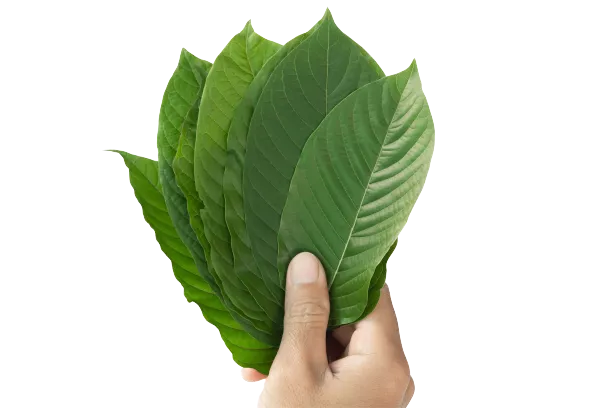
What Is Kratom Used For?
Kratom has been used since the early 19th century by laborers of southeast Asia to combat exhaustion and burnout. A strong tea was also used sometimes to treat diarrhea or urinary tract infections.
Today, the most common applications of kratom include [26]:
- Anxiety
- Chronic pain
- Cough
- Depression
- Diarrhea
- Opiate withdrawal
- Stress disorders
What Is The Appropriate Dose Of Kratom?
The optimal kratom dose will rely on several factors like age and the user’s health status.
Low doses are more stimulating — high doses are better for pain and anxiety.
A dose that ranges from 2 grams to 12 grams per day is supposed to be well-tolerated by most otherwise healthy individuals. It’s crucial to start with lower doses and gradually increase the amount of kratom to meet one’s requirements.
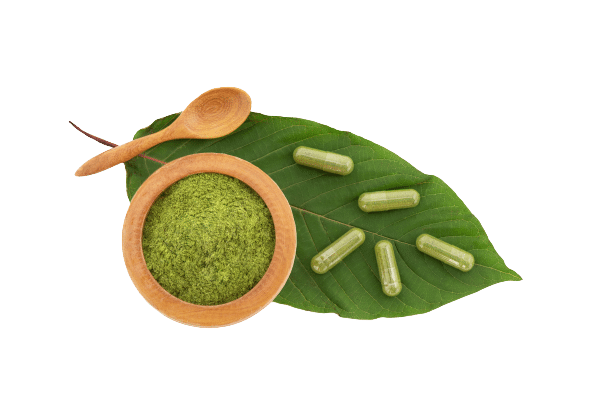
What Are The Side Effects Of Kratom?
Serious adverse reactions following an average dosage of kratom are rare. But, with increasing doses, the side effects often get more obvious.
The adverse effects of kratom may include [27]:
- Anxiety
- Constipation
- Dry mouth
- Headaches
- Heart palpitations
- High blood pressure
- Hypothyroidism
- Jaundice
- Nausea
- Vomiting
We also know that kratom has the potential to become addictive. The best way to avoid this is to take tolerance breaks that allow you to space out your doses.
Also see: How Long Should I Wait Between Kratom Doses?
What Are The Different Types Of Kratom?
Depending on the color of the mid-vein, kratom is classified into the following types — called strains.

White Vein Kratom
White vein kratom is harvested from young kratom trees and has the highest concentration of mitragynine. It is known for its stimulant and mood-enhancing properties. It is also said to boost energy, concentration, and stamina.

Red Vein Kratom
Red vein kratom is harvested from the most mature kratom trees. It has the highest concentration of 7-hydroxymitragynine and thus is the most potent strain. It produces a calming and sedating effect.

Green Vein Kratom
Green vein kratom is harvested from the middle phase of the lifecycle of a kratom tree. It has properties of both white and red strains. It produces a mild stimulating effect without causing significant sedation.

Yellow Vein Kratom
Yellow vein kratom is obtained from the fermentation of leaves of green vein kratom. It retains the green vein kratom properties, but its effects are relatively long-lasting.

Key Takeaways: Does Kratom Interact With Cephalexin?
Kratom and cephalexin do not have similar mechanisms of action and are unlikely to result in any major complications. Their metabolism pathways are different as well.
With that said, taking kratom and cephalexin together is not recommended.
Both substances may reduce their bioavailability and compromise their effectiveness. It’s wise to separate doses of each compound by at least 2 hours to avoid this effect.
As always, make sure you consult your physician before taking these two drugs together for any reason.
- Chien, G. C. C., Odonkor, C., & Amorapanth, P. (2017). Is Kratom the new ‘legal high’on the block?: The case of an emerging opioid receptor agonist with substance abuse potential. Pain physician, 20(1), E195-8.
- Kumar, R., Singh, A., Sharma, K., & Talwar, V. (2020). A rare case of cephalexin-induced acute interstitial nephritis with hypokalemic periodic paralysis. Indian Journal of Pharmacology, 52(3), 210.
- Kamble, S. H., Sharma, A., King, T. I., León, F., McCurdy, C. R., & Avery, B. A. (2019). Metabolite profiling and identification of enzymes responsible for the metabolism of mitragynine, the major alkaloid of Mitragyna speciosa (kratom). Https://Doi.Org/10.1080/00498254.2018.1552819, 49(11), 1279–1288.
- Sullivan, H. R., Billings, R. E., & McMahon, R. E. (1969). METABOLISM OF CEPHALEXIN-14C IN MICE AND IN RATS. The Journal of Antibiotics, 22(5), 195–200.
- Ramanathan, S., Parthasarathy, S., Murugaiyah, V., Magosso, E., Tan, S. C., & Mansor, S. M. (2015). Understanding the Physicochemical Properties of Mitragynine, a Principal Alkaloid of Mitragyna speciosa, for Preclinical Evaluation. Molecules 2015, 20(3), 4915–4927.
- Flores-Bocanegra, L., Raja, H. A., Graf, T. N., Augustinović, M., Wallace, E. D., Hematian, S., Kellogg, J. J., Todd, D. A., Cech, N. B., & Oberlies, N. H. (2020). The Chemistry of Kratom [Mitragyna speciosa]: Updated Characterization Data and Methods to Elucidate Indole and Oxindole Alkaloids. Journal of Natural Products, 83(7), 2165.
- Tsuji, A., Hirooka, H., Tamai, I., & Terasaki, T. (1986). Evidence for a carrier-mediated transport system in the small intestine available for FK089, a new cephalosporin antibiotic without an amino group. The Journal of antibiotics, 39(11), 1592-1597.
- Jagabalan, J. D. Y., Murugaiyah, V., Zainal, H., Mansor, S. M., & Ramanathan, S. (2019). Intestinal permeability of mitragynine in rats using in situ absorption model. Journal of Asian Natural Products Research, 21(4), 351–363.
- Wang, K. Y., Xiao, Y., & Chung, T. S. (2006). Chemically modified polybenzimidazole nanofiltration membrane for the separation of electrolytes and cephalexin. Chemical Engineering Science, 61(17), 5807–5817.
- Herman, T. F., & Hashmi, M. F. (2022). Cephalexin. Kucers the Use of Antibiotics: A Clinical Review of Antibacterial, Antifungal, Antiparasitic, and Antiviral Drugs, Seventh Edition, 361–369.
- Ya, K., Tangamornsuksan, W., Scholfield, C. N., Methaneethorn, J., & Lohitnavy, M. (2019). Pharmacokinetics of mitragynine, a major analgesic alkaloid in kratom (Mitragyna speciosa): A systematic review. Asian Journal of Psychiatry, 43, 73–82.
- Hassan, Z., Suhaimi, F. W., Ramanathan, S., Ling, K. H., Effendy, M. A., Müller, C. P., & Dringenberg, H. C. (2019). Mitragynine (Kratom) impairs spatial learning and hippocampal synaptic transmission in rats. Journal of Psychopharmacology, 33(7), 908–918.
- Speight, T. M., Brogden, R. N., & Avery, G. S. (2012). Cephalexin: A Review of its Antibacterial, Pharmacological and Therapeutic Properties. Drugs 1972 3:1, 3(1), 9–78.
- Yotsuji, A., Mitsuyama, J., Hori, R., Yasuda, T., Saikawa, I., Inoue, M., & Mitsuhashi, S. (1988). Mechanism of action of cephalosporins and resistance caused by a decreased affinity for penicillin-binding proteins in Bacteroides fragilis. Antimicrobial Agents and Chemotherapy, 32(12), 1848–1853.
- Autmizguine, J., Watt, K. M., Théorêt, Y., Kassir, N., Laferrière, C., Parent, S., Tapiéro, B., & Ovetchkine, P. (2013). Pharmacokinetics and pharmacodynamics of oral cephalexin in children with osteoarticular infections. Pediatric Infectious Disease Journal, 32(12), 1340–1344.
- Ramchandar, N., Arnold, J., Cannavino, C., & Bradley, J. S. (2020). Frequency of Dosing of Cephalexin for Oral Step-Down Therapy of Pediatric Osteoarticular Infections Caused by Methicillin-Sensitive Staphylococcus Aureus. Pediatric Infectious Disease Journal, 523–525.
- McLinn, S. E., Daly, J. F., & Jones, J. E. (1975). Cephalexin Monohydrate Suspension: Treatment of Otitis Media. JAMA, 234(2), 171–173.
- Speight, T. M., Brogden, R. N., & Avery, G. S. (2012). Cephalexin: A Review of its Antibacterial, Pharmacological and Therapeutic Properties. Drugs 1972 3:1, 3(1), 9–78.
- Warren Derrick, C., & Reilly, K. (1983). The role of cephalexin in the treatment of skin and soft-tissue infections. Postgraduate Medical Journal, 59 Suppl 5(SUPPL. 5), 43–46.
- Erikssen, J., Midtvedt, T., & Bergan, T. (2015). Treatment of Urinary Tract Infections with Cephalexin. Scandinavian Journal Of Infectious Diseases, 2(1), 53–58.
- Wilson, W., Taubert, K. A., Gewitz, M., Lockhart, P. B., Baddour, L. M., Levison, M., Bolger, A., Cabell, C. H., Takahashi, M., Baltimore, R. S., Newburger, J. W., Strom, B. L., Tani, L. Y., Gerber, M., Bonow, R. O., Pallasch, T., Shulman, S. T., Rowley, A. H., Burns, J. C., … Durack, D. T. (2007). Prevention of infective endocarditis: Guidelines from the American Heart Association. Circulation, 116(15), 1736–1754.
- Osmon, D. R., Berbari, E. F., Berendt, A. R., Lew, D., Zimmerli, W., Steckelberg, J. M., Rao, N., Hanssen, A., & Wilson, W. R. (2013). Executive Summary: Diagnosis and Management of Prosthetic Joint Infection: Clinical Practice Guidelines by the Infectious Diseases Society of America. Clinical Infectious Diseases, 56(1), 1–10.
- Griffith, R. S. (1983). The pharmacology of cephalexin. Postgraduate Medical Journal, 59 Suppl 5(SUPPL. 5), 16–27.
- Cinosi, E., Martinotti, G., Simonato, P., Singh, D., Demetrovics, Z., Roman-Urrestarazu, A., Bersani, F. S., Vicknasingam, B., Piazzon, G., Li, J. H., Yu, W. J., Kapitány-Fövény, M., Farkas, J., di Giannantonio, M., & Corazza, O. (2015). Following “the Roots” of Kratom (Mitragyna speciosa): The Evolution of an Enhancer from a Traditional Use to Increase Work and Productivity in Southeast Asia to a Recreational Psychoactive Drug in Western Countries. BioMed Research International, 2015.
- Behnood-Rod, A., Chellian, R., Wilson, R., Hiranita, T., Sharma, A., Leon, F., McCurdy, C. R., McMahon, L. R., & Bruijnzeel, A. W. (2020). Evaluation of the rewarding effects of mitragynine and 7‐hydroxymitragynine in an intracranial self-stimulation procedure in male and female rats. Drug and Alcohol Dependence, 215, 108235.
- Singh, D., Narayanan, S., & Vicknasingam, B. (2016). Traditional and non-traditional uses of Mitragynine (Kratom): A survey of the literature. Brain Research Bulletin, 126, 41–46.
- Sethi, R., Hoang, N., Ravishankar, D. A., McCracken, M., & Manzardo, A. M. (2020). Kratom (Mitragyna speciosa): Friend or Foe? The Primary Care Companion for CNS Disorders, 22(1), 27410.
- Spyker, D. A., Thomas, B. L., Sande, M. A., & Bolton, W. K. (1978). Pharmacokinetics of Cefaclor and Cephalexin: Dosage Nomograms for Impaired Renal Function. Antimicrobial Agents and Chemotherapy, 14(2), 172–177.

